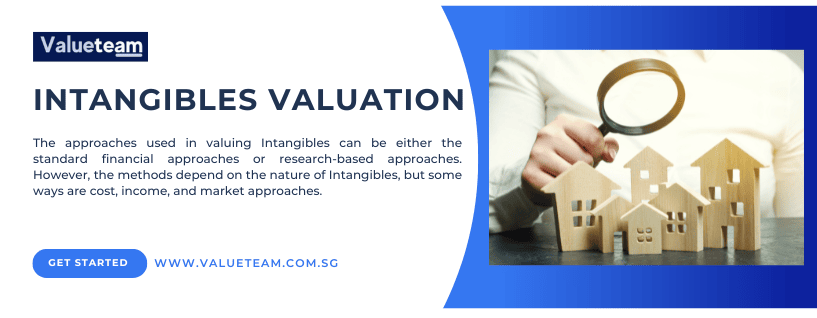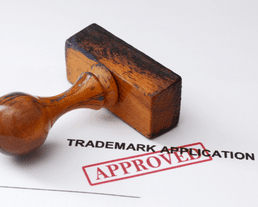Quick Contact
Need Help?
Please Feel Free To Contact Us. We Will Get Back To You With 1-2 Business Days.
info@valueteam.com.sg
+65 9730 4250
Download
Company White Paper
1.30 MB
Company Media Kit
1.22 MB
Intangibles Valuation
Trusted name to meet your organisation’s intangibles valuation needs.

Why Choose Us
Important Things You Should Know

EXPERIENCED TEAM
We are headed by a professional with more than 20 years of experience in valuations.

COMPETITIVE PRICING
We are all about delivering quality valuation packages at competitive pricing to our clients.

PERSONALIZED APPROACH
We understand our clients’ requirements and provide personal attention that meets their requirements.
Your Business Needs to Stay Dynamic in a Complex Ecosystem
Company Intangible Valuation
Related like Trademarks, Trade Name, Brand, Goodwill, customer networks, users, etc.
Technology Valuation
Intangibles Valuation technology, patents, platforms, business solutions, etc.
Contract Valuation
Intangibles Valuation like non-compete, franchise, licensing, marketing rights, service contracts, etc.
INTANGIBLES VALUATION APPROACHES
The approaches used in valuing Intangibles can be either the standard financial approaches or research-based approaches. However, the methods depend on the nature of Intangibles, but some ways are cost, income, and market approaches.
MARKET
The market approach investigates the value based on the transaction value of assets. The valuation in this approach is assessed as per the transactions among third parties. Therefore, the method is typified by great objectivity. However, in particular, for intellectual property rights, identical transactions with comparable recognition, intensity, or economic and legal scenarios usually do not occur, and the implementation of this approach is quite hard.
Moreover, all the above standard financial approaches cannot determine the Intangibles value because, during Intangibles valuation, qualitative elements also should be measured based on studies on consumer behavior. Hence, in the Intangibles valuation process, it is imperative to undertake both the financial approaches of valuation and research-based approaches.
STATISTICAL
Sometimes the intangible asset may not sound appropriate for the current time, but it may be beneficial in the future. Therefore, such intangible assets are optional to avail by the company because they may or may not value in the present time but maybe in the end, as this can be a valuable asset. Some of the valuations approaches.
Binomial Option Pricing Model (BOPM): We use the BOPM approach to estimate the appropriate current price on a given day for an anticipated future payoff. The BOPM model is extensively employed because of its ability to deal with several conditions.
The binomial model is one of the preferred models, but this is more complex than Black Scholes for valuation. Under this approach, we calculate the option pricing using various probabilities and data like using exercise price, volatility, the life of assets, success factors, etc. The binomial method is quite complicated and can allow for more variables and events during the vesting period.
Monte Carlo Simulation: Under the Monte Carlo model, many random variables are simulated to estimate the fair value of intangibles of the company. This is one of the most flexible models used to calculate the risk and valuation and easy to explain the model’s outcomes. However, this model requires complex calculations and may need multiple simulations to calculate the right value. This model can manage the complex situations of intangibles valuation, but the model is difficult to explain and understand.
Black-Scholes-Merton (BSM) Model : We use the BSM model in valuing the intangibles. It is handy to determine fair prices of intangibles based on variables, including volatility, type, actual stock price, strike price, time, and the risk-free rate.
Our End To End Services
Company Valuation
Start-Up Valuation
M&A Valuation
HOW DOES VALUATION HELP YOUR INTANGIBLES?
Benefits of valuing a Intangibles
Intangibles valuation can help you to buy or sell or license an intangible with ease, discuss better terms with the buyers or sellers of the intangibles and choose the right time for selling or purchasing a intangibles.
Stimulate Growth
Periodic valuation is a good practice because it helps you evaluate and appraise your intangibles functioning; uncover business areas that need improvement and quickly raise capital for your intangibles.
Research-based approach
- Most of the research-based approaches that value Intangibles use consumer behavior and mindsets that influence the economic functioning of Intangibles. Though the complexity and intricacy of such prototypes differ, they all attempt to describe, elucidate, and compute consumer viewpoints that affect their buying actions. The approaches encompass several measurement tools, such as stages of familiarity, understanding, recognition, significance, particular impression, buying thoughtfulness, inclination, contentment, and endorsement.
- All these features are allocated diverse Intangibles equity scores, and the sum of all the scores assigned to various features gives the complete Intangibles score. An alteration in one or a grouping of indicators is anticipated to affect consumers’ buying actions, influencing the financial value of the Intangibles being evaluated. However, these approaches do not distinguish between the outcomes of other prominent aspects, such as R&D, design, and the brand. Hence, these approaches do not define identifiable marketing indicators and financial functioning.
What Are The Purposes Of Intangible Asset Valuation?
What Are The Different Steps Undertaken During The Appraisal Of Intangible Assets?
- Recognition of the intangible asset;
- Data collection and analysis;
- Examination of the remaining helpful life and implementation of the three valuation methodologies; and
- Deduction of value.
What Is The Significance Of Intangible Assets In Business And Legal Transactions?
What Are Some Of The Key Documents Essential For Carrying Out Intangible Asset Valuation?
- Copies of present patents and patent applications;
- Comprehensive list of all technical illustrations, specifications, and blueprints of the product;
- Complete list of all customers on the present customer list;
- Copies of all active contracts with clients;
- Overview of all present customer proposals and unsettled quotations;
- List of all software purchased from outside and programmed in-house.
What Factors Are Responsible For An Improvement Or Degradation In The Value Of Intangibles Assets?
- physical factors such as an accident or catastrophe;
- functional factors, such as inadequacy and technological evolution;
- operational factors, such as management and accounting methods;
- economic conditions, such as less demand, rate of interest, and inflation.
M&A VALUATION
We do valuations of targets, and PPA and EPS analysis, both pre and post-transaction.
BUSINESS PLAN
We can assist in building a detailed and comprehensive business plan for all sectors/industries.






